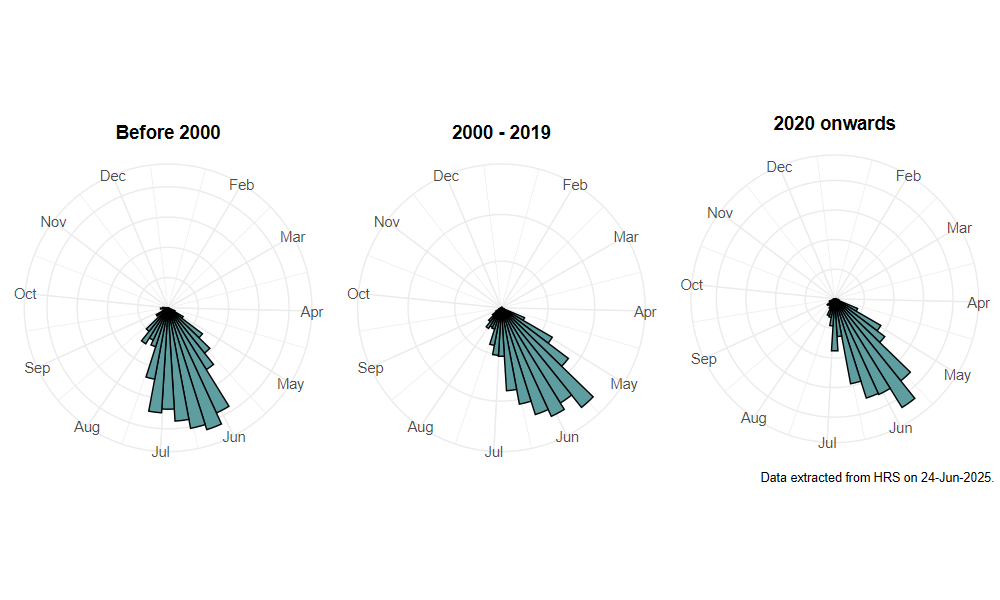Anasimyia lineata (Fabricius, 1787)
Identification
Identification difficulty = 2. ![]()
![]() according to Ball & Morris, 20241
according to Ball & Morris, 20241
Synonymy
Helophilus lineatus Fabricius in Coe(1953)2. Eurimyia lineata in Bot & van de Meutter (2023)3.
Biology
The larva is of the 'long-tailed' type. They may be found in eutrophic wetlands in rotting plant debris just below the surface. Typical sites support emergent plants such as Great Reedmace Typha latifolia, Reed Sweet Grass Glyceria maxima and Branched Burr-reed Sparganium erectum, including Typha filled roadside ditches). Adults are most frequently found amongst marginal vegetation where they visit the flowers of buttercups Ranunculus (several species), Marsh Marigold Caltha palustris and other wetland plants such as Water Plantain Alisma plantago-aquatica.
Flight period
The following plots show the number of unique records per week that were not reported to be of eggs, larvae or pupae.

Distribution
Primarily a lowland species that occurs in river valleys and coastal marshes. It is found throughout mainland Britain but is much scarcer in northern areas.

Trends
The following plots show the Frescalo TFactor vs year and a map of the rescaled frequency (all records) for the species. For an explanation see here.

-
Ball, S., & Morris, R. (2024). Hoverflies of Britain and Ireland. WILDGuides (3rd ed.). Oxford: Princeton University Press. ↩
-
Coe, R. (1953). Diptera: Syrphidae. Handbooks for the Identification of British Insects, 10(1), 1–98. ↩
-
Bot, S., & van de Meutter, F. (2023). Hoverflies of Britain and North-Western Eupope. Bloomsbury Wildlife. London: Bloomsbury Publishing. ↩
